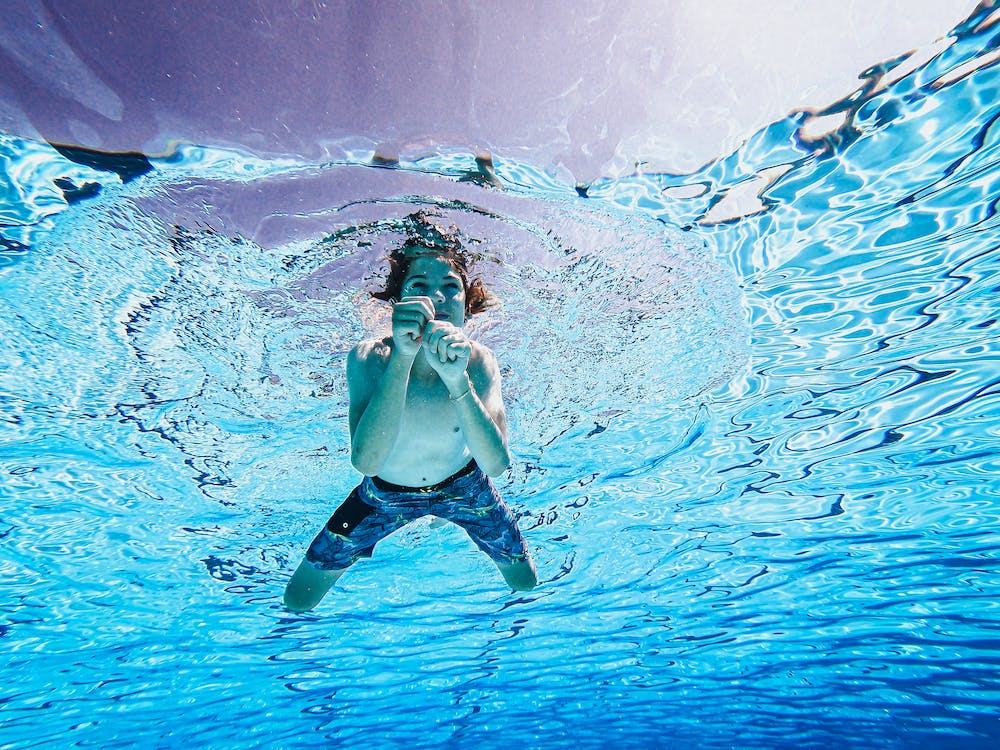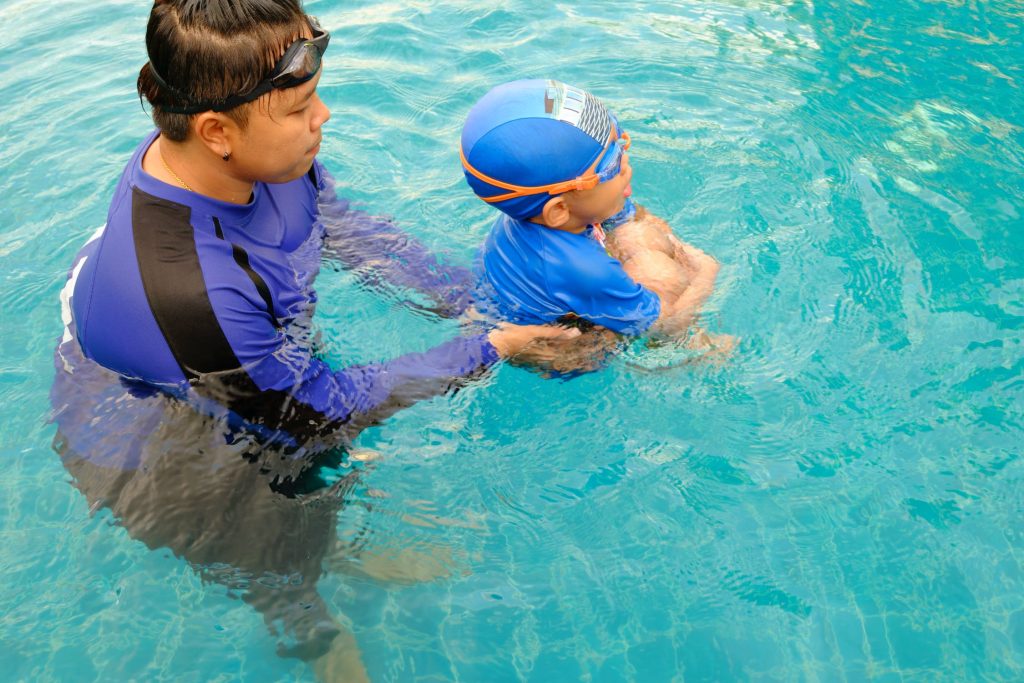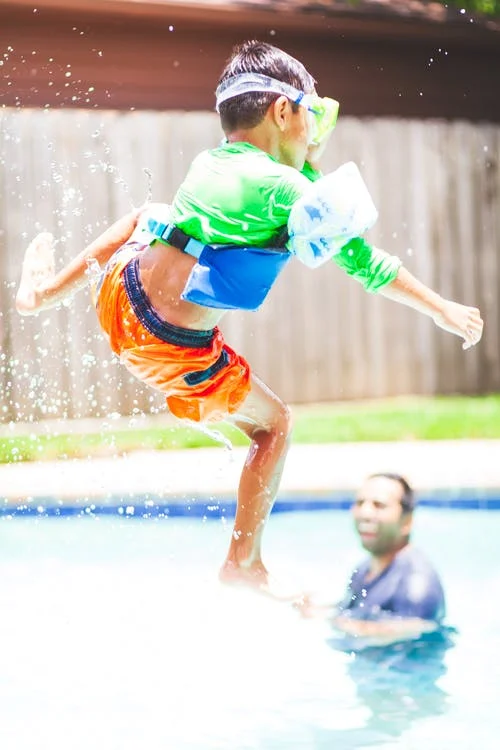As a parent, ensuring the well-being and development of your teenager is undoubtedly a top priority.
While numerous activities can contribute to their growth, one particular pursuit stands out for its multitude of benefits – swimming.
Not only is swimming an enjoyable and refreshing sport, but it also offers a lot of advantages that can positively impact your teenager’s physical, mental, and social well-being.
In this blog article, we will discuss ten mind-blowing facts every parent should know about their teenager swimming in the pool.

We will let you know the remarkable impact of swimming on teenagers’ overall health, its role in boosting their self-confidence, and fostering social connections.
We will explore the physical benefits, intellectual and mental development, and safety considerations.
We will also explore the credible reasons why swimming deserves a top spot on your teenager’s activity list.
So, let’s dive right in leaving you well-informed with valuable insights and knowledge about incorporating swimming into your teenager’s lifestyle.
Ten Facts Every Parent Should Know About Teenager Swimming
- Swimming is a low-impact exercise: Swimming is gentle on the joints, making it an ideal exercise for teenagers. It reduces the risk of injuries and provides a full-body workout.
- Swimming can be a family bonding activity: Swimming provides an opportunity for families to engage in physical activity together, fostering bonding and creating lasting memories.
- Swimming is a great stress reliever: Engaging in swimming can reduce stress levels, promote relaxation, and improve mental well-being.
- Swimming is a full-body workout: Swimming engages multiple muscle groups simultaneously, providing a comprehensive and efficient full-body workout.
- Swimming promotes weight management: Swimming is an effective calorie-burning activity that aids in weight management and supports a healthy lifestyle.
- Swimming fosters water safety skills: Participating in swimming lessons helps teenagers develop essential water safety skills, increasing their confidence and reducing the risk of accidents.
- Swimming can be a lifelong passion: Introducing teenagers to swimming early on can spark a lifelong passion for the sport, leading to participation in competitive swimming or other aquatic activities.
- Swimming is a low-risk activity for injury: Compared to high-impact sports, swimming has a lower risk of injury due to the buoyancy and support of water, making it a safer option for teenagers.
- Swimming provides a break from screen time: Engaging in swimming allows teenagers to disconnect from digital devices and enjoy an activity that promotes physical fitness and mental well-being.
- Swimming provides a refreshing and enjoyable experience: Above all, swimming is a fun and refreshing activity that allows teenagers to enjoy the water, relax, and have a good time.
The Remarkable Impact of Swimming on Teenagers’ Overall Health
As parents, we constantly strive to provide our teenagers with activities that promote their overall health and well-being.
Amidst the numerous options available, swimming stands out as a remarkable activity with a great impact on teenagers’ physical, mental, and social health.

Beyond its refreshing and enjoyable nature, swimming offers a lot of benefits that contribute to the overall development of teenagers.
From the physical, mental, Intellectual, and social benefits, below are the remarkable impact of swimming on teenagers’ overall health:
The Physical Benefits of Swimming
Swimming is an exceptional form of exercise that engages the entire body, making it a fantastic full-body workout for teenagers. Here are some key physical benefits of swimming:
-
Cardiovascular Fitness: Swimming helps improve heart health and increases stamina by enhancing cardiovascular fitness.
The repeated pattern of movements and controlled breathing during swimming sessions promote a strong and efficient heart. -
Muscle Strength and Endurance: The resistance provided by the water engages various muscle groups, helping teenagers build muscular strength and endurance.
Regular swimming can tone and strengthen the arms, shoulders, core, back, and leg muscles. -
Flexibility and Range of Motion: The water’s buoyancy allows for fluid movements, enhancing flexibility and promoting a wider range of motion in joints.
Swimming helps maintain and improve overall flexibility, reducing the risk of injuries. -
Weight Management: Swimming is an effective activity for weight management, as it burns calories and increases metabolism.
Regular swimming sessions can contribute to maintaining a healthy weight and body composition.
Mental and Emotional Well-being
Swimming goes beyond physical benefits; it also has a profound impact on teenagers’ mental and emotional well-being. Here’s how swimming positively affects their mental health:
-
Stress Reduction: Swimming acts as a natural stress reliever, helping teenagers unwind and relax.
The regular motions, soothing water, and focused breathing create a calming effect, reducing stress levels and promoting relaxation.
-
Enhanced Mood and Mental Clarity: The release of endorphins during swimming sessions promotes a positive mood, improves mental clarity, and boosts overall mental well-being.
Swimming can reduce symptoms of anxiety, depression, and some other mental health conditions.
-
Improved Sleep Quality: Regular swimming can improve sleep quality in teenagers.
The physical exercise and relaxation experienced during swimming sessions contribute to better sleep patterns and a more restful night’s sleep.

Intellectual Development and Academic Performance
Swimming has been linked to Intellectual development and improved academic performance in teenagers. Consider the following benefits:
-
Cognitive Stimulation: Swimming stimulates brain activity, enhancing cognitive function, focus, and concentration.
The combination of physical exercise, sensory stimulation, and mental engagement in swimming contributes to intellectual development. -
Memory Enhancement: Studies suggest that swimming can improve memory retention and recall abilities in teenagers.
The repetitive nature of swimming movements and the increased blood flow to the brain during swimming sessions contribute to enhanced memory.
-
Mental Discipline and Goal Setting: Regular swimming practice instills discipline, perseverance, and goal-oriented behavior in teenagers.
Setting swimming-related goals and working towards achieving them helps develop mental discipline and a strong work ethic, transferable to other areas of life.
Social Connections and Self-Confidence
Swimming provides teenagers with valuable opportunities for social connections and the development of self-confidence. Here’s how swimming contributes to their social and emotional growth:
-
Teamwork and Collaboration: Swimming offers opportunities for teamwork and collaboration, particularly in relay races or team-based swimming activities.
Teenagers learn to work together, communicate effectively, and support one another, building up valuable social skills. -
Building Friendships: Swimming provides a conducive environment for teenagers to form friendships.
Whether through swimming lessons, swim clubs, or recreational swim sessions, they can connect with like-minded peers who share a common interest. -
Self-Confidence and Overcoming Challenges: Swimming helps teenagers build self-confidence as they learn new skills, overcome challenges, and achieve personal goals.
Mastering different swimming techniques, competing in races, or conquering fears in the water boosts self-esteem and self-belief.
READ ALSO: How Swim Backpack Empowers Swimmers to Conquer Swimming Challenges
Why Teenager Swimming is an Accessible and Versatile Activity
Swimming is a highly accessible and versatile activity that offers numerous benefits for teenagers.
Whether they prefer the peacefulness of a pool, the natural beauty of a lake, or the largeness of an ocean, swimming can be enjoyed in various settings.
Moreover, swimming caters to different preferences and interests, as it can be pursued individually or as part of a group.
In this section, we will explore why teenager swimming is an accessible and versatile activity.
We will discuss its diverse settings, individual and group options, recreational and competitive opportunities, and adaptability for teenagers of all abilities:
- Enjoying Different Settings: Pools, Lakes, and Oceans;
Swimming offers teenagers the opportunity to immerse themselves in different settings, each with its unique characteristics and appeal.
Pools provide a controlled and supervised environment, making them suitable for beginners and those seeking a more structured swimming experience.
Lakes offer the composure of nature and the chance to swim amidst breathtaking landscapes.
Finally, oceans provide an exciting experience with their largeness and the opportunity to navigate waves and currents.
The availability of these settings ensures that swimming can be enjoyed in diverse and captivating environments.
- Participating as Individual or Group Options;
Swimming can be participated individually or as part of a group, allowing teenagers to cater to their preferences and interests.

Some teenagers may enjoy the loneness and meditative ability that swimming alone provides, taking pleasure in the calmness of the water as they focus on their progress and personal goals.
On the other hand, swimming in a group setting offers opportunities for social interaction, camaraderie, and the formation of lasting friendships.
Joining swim clubs or participating in team events fosters teamwork, communication skills, and a sense of belonging.
The choice between individual and group swimming ensures that teenagers can engage in the activity in a way that aligns with their personal preferences.
- Recreational and Competitive Opportunities;
Swimming caters to teenagers seeking both recreational enjoyment and competitive challenges.
For those who simply want to swim for leisure and relaxation, recreational swimming provides a refreshing and restoring experience.
Whether it’s leisurely laps or casual water games, recreational swimming allows teenagers to enjoy the water at their own pace.
On the other hand, for those who thrive on competition and seek to test their skills, there are numerous competitive swimming opportunities available.
From local meets to national competitions, teenagers can engage in the excitement and pleasure of competitive swimming.
The availability of both recreational and competitive options ensures that swimming meets the varied interests and goals of teenagers.
- Adaptability for Different Abilities;
Swimming is an inclusive activity that can be adapted to accommodate teenagers of varying abilities, making it accessible to everyone.
Whether a teenager is a beginner, has physical limitations, or possesses advanced swimming skills, the activity can be modified to suit their needs.
Swimming lessons and programs are designed to provide individualized instruction, focusing on building confidence and skill progression.
Specially trained instructors can tailor lessons to accommodate different abilities, ensuring that teenagers can participate and enjoy swimming regardless of their current level.
The adaptability of swimming promotes inclusivity and allows all teenagers to experience the joy and benefits of the activity.
Challenges Faced by a Teenager Swimming in the Pool
Like any other sport or activity, swimming also presents its own set of challenges.
We will explore the challenges faced by teenagers swimming in the pool. By understanding and addressing these challenges, we can help teenagers overcome obstacles and make the most of their swimming experience.
Below are some of the challenges faced by teenagers swimming in the pool:
-
Learning Proper Technique: Mastering the correct swimming technique can be challenging for teenagers.
It requires coordination, body awareness, and practice to achieve efficient and effective strokes. -
Breath Control and Timing: Controlling breathing and coordinating it with stroke movements can be difficult, especially for novice swimmers.
Learning to breathe properly while swimming is essential for maintaining stamina and reducing fatigue. -
Stamina and Endurance: Building stamina and endurance is a gradual process in swimming. Initially, teenagers may struggle to swim longer distances or maintain a consistent pace.
Regular practice and gradual progression can help improve their stamina over time. -
Overcoming Fear of Water: Some teenagers may experience fear or anxiety when it comes to water. Overcoming this fear and building confidence in the water is crucial for their swimming progress.
Patient guidance and support from swimming instructors can help teenagers overcome their fear.
-
Competitive Pressure: For teenagers involved in competitive swimming, the pressure to perform well and achieve personal or team goals can be challenging.
Managing competitive pressure while maintaining a positive mindset is essential for their success and enjoyment of the sport. -
Pool Crowding and Protocol: Swimming in crowded pools can be challenging for teenagers, as they navigate around other swimmers.
Understanding pool protocols, such as lane sharing and proper spacing, is important to ensure a safe and pleasant swimming experience. -
Time Management: Balancing swimming practice with other commitments, such as school, extracurricular activities, and social life, can be challenging for teenagers.
Developing good time management skills is crucial to maintain a consistent swimming routine. -
Maintenance of Swim Gear: Keeping swim gear, including swimsuits, goggles, and caps, in good condition requires regular maintenance.
Ensuring proper cleaning, replacing worn-out gear, and having spare equipment on hand can help overcome potential challenges related to swim gear. -
Weather and Pool Availability: Outdoor swimming pools may have restricted operating hours or closures due to cold weather.
Planning swimming sessions around weather conditions and ensuring access to alternative indoor facilities can help overcome this challenge.
-
Balancing Technique and Speed: Striking a balance between focusing on improving swimming technique and increasing speed can be challenging.
It requires a combination of technical refinement and targeted training to achieve both efficiency and speed in swimming.
READ ALSO: 7 Important Factors to Consider Before Giving Swimming Gifts to Swimmers
Safety Considerations for a Teenager Swimming in the Pool
Ensuring the safety of teenagers while they swim is of utmost importance.
As parents, it is crucial to be aware of potential hazards and take necessary precautions to create a safe swimming environment for our teenagers.

We will discuss essential safety considerations and provide valuable tips for parents to ensure the well-being of their teenagers while swimming in the pool.
Tips for Parents to Ensure the Well-being of Their Teenagers
- Supervision: The presence of a responsible adult or lifeguard is crucial when teenagers are swimming. Never leave them unsupervised, especially if they are inexperienced swimmers or swimming in unfamiliar waters.
- Learn to Swim: Enroll your teenager in swimming lessons taught by certified instructors. Learning to swim is not only a valuable life skill but also enhances their water safety awareness and abilities.
- Pool Safety Measures: Ensure that the pool has appropriate safety measures in place, such as fencing, secure gates, and safety covers. Regularly inspect the pool area for any potential hazards or maintenance issues.
- Communication and Emergency Plan: Establish clear communication with your teenager regarding safety rules, boundaries, and emergency procedures. Teach them to recognize and respond appropriately to potential dangers or emergencies in the water.
- Buddy System: Encourage your teenager to swim with a buddy or in the presence of friends or family members. The buddy system provides an added layer of safety and support in case of any accidents.
- Water Depth and Diving Safety: Teach your teenager about the importance of knowing the water depth before diving. Discourage diving in shallow water and emphasize the importance of diving only in designated deep areas.
- Skin Protection: Protect your teenager from harmful UV rays by ensuring they wear sunscreen with a high SPF, a wide-brimmed hat, and UV-protective sunglasses. Reapply sunscreen regularly, especially after swimming.
- Personal Hygiene: Educate your teenager about the importance of personal hygiene in and around the pool. Encourage them to shower before and after swimming to minimize the spread of germs and reduce the risk of infections.
- Swim Skills Assessment: Regularly assess your teenager’s swimming skills and comfort level in the water. Adjust their swimming activities and boundaries based on their abilities to ensure they are always in a safe and controlled environment.
- First Aid and CPR: Equip yourself with knowledge of first aid and cardiopulmonary resuscitation (CPR). Being prepared to respond to emergencies can make a critical difference in ensuring the safety and well-being of your teenager.
- Be Mindful of Hazards: Educate your teenager about potential hazards in and around the pool, such as slippery surfaces, sharp edges, or equipment. Encourage them to be cautious and alert while swimming.
- Regular Maintenance: Regularly maintain and inspect pool equipment, including ladders, diving boards, and safety equipment, to ensure they are in good working condition and free from any faults.
READ ALSO: 14 Important Swim Meet Survival Kit you Need
Conclusion
Swimming offers a wide range of reasons why it should be considered an important part of your teenager’s activity list.
From its complete physical workout and low-impact nature to its positive impact on mental well-being and social connections, swimming encompasses numerous benefits.
It promotes physical fitness, enhances cardiovascular health, and aids in weight management.
Additionally, swimming provides stress relief, and cognitive stimulation, and boosts self-confidence. It cultivates social interaction, teamwork, and lifelong water safety skills.
With its versatility and accessibility, swimming caters to teenagers of all abilities and interests.
So, let’s prioritize swimming as a key activity for our teenagers, allowing them to experience the incredible advantages it offers for their overall well-being.
